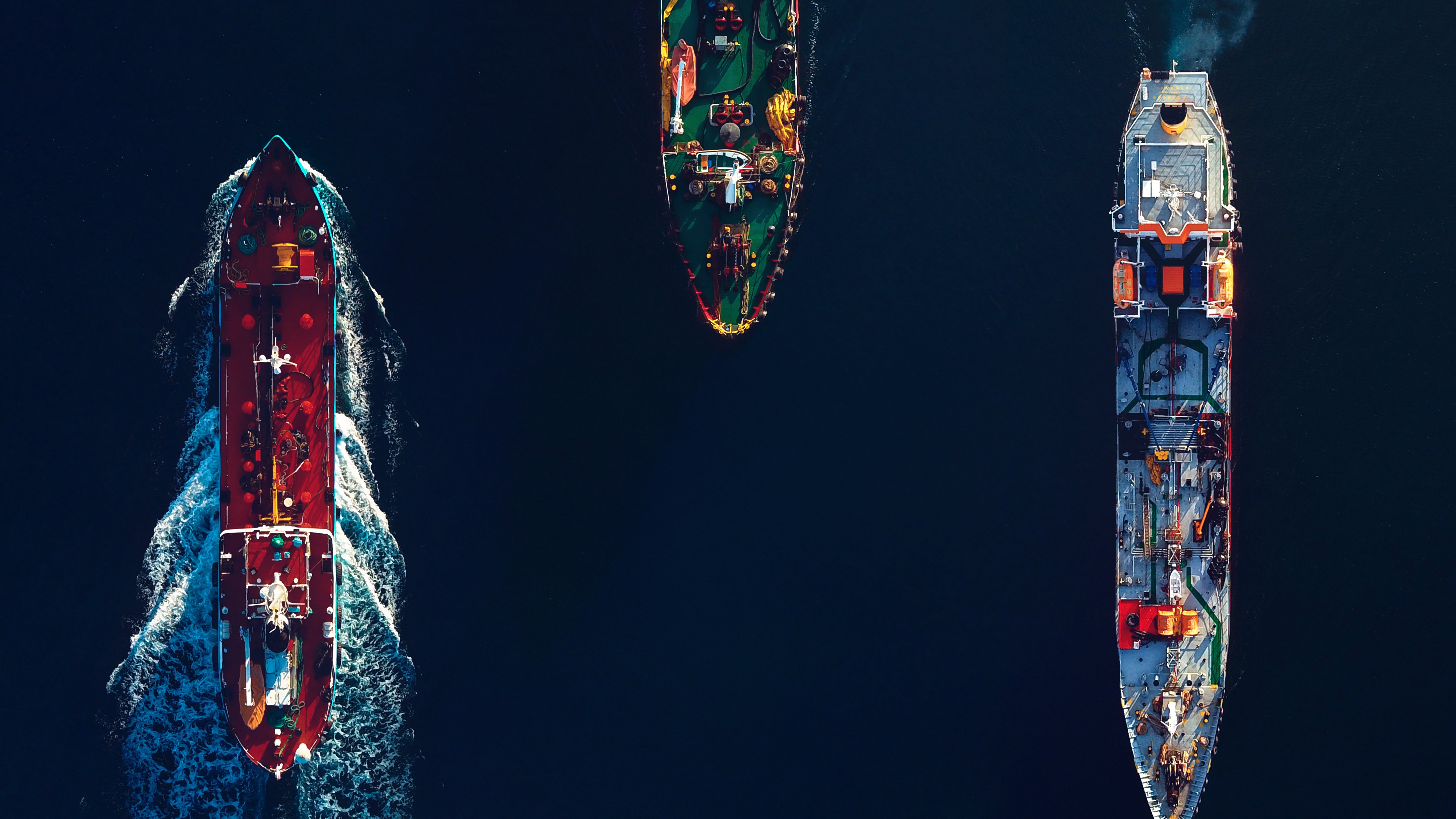Incoterms® Rules
The importance of the Incoterms Rules
properties.trackTitle
properties.trackSubtitle
Incoterms are internationally recognized and harmonized terms that spell out the specific obligations of parties to transactions involving the purchase and sale of goods involving shipment and delivery risks.
Published by the International Chamber of Commerce, the Incoterms Rules allow buyers and sellers to transact business with the certainty that each understands:
Why do we need the Incoterms Rules?
In the days of horses, carts, and sailing ships, if a merchant wanted to export goods, they only had control over two things:
- Getting the goods to a port
- Handing them over to the master of a ship bound for their intended destination
Once the goods were on board the ship, it was impossible for the seller to have any further control over what happened to them.
Essentially, the goods became the buyer’s problem, and by custom of trade, the risk of loss or damage transferred to the buyer at that point.


How goods are transported and which Incoterms Rules are appropriate
For the majority of goods:
- International trade is not just by sea. It also can be by road, rail, or air. A single movement of goods often uses more than one of these methods of carriage.
- About 60% of all world trade is transported in containers.
- Contracts of carriage are mainly arranged on a warehouse-to-warehouse basis rather than port-to-port only.
- The method or methods of carriage may not even involve a ship.
If FAS, FOB, CFR, or CIF are used for containerized goods, and then those goods are damaged in the country of origin, there may be a dispute about whether the seller or the buyer bears that loss.
Choosing the right Incoterms Rule and using it in the right way is essential
Using terms that are designed for modern, multimodal carriage means that sellers and buyers can be confident that they both have the same understanding about exactly where the risk of loss or damage passes from the seller to the buyer.
The risk transfer point, which is called the “delivery” point in the Incoterms Rules, is important in relation to marine cargo insurance underwriting and claims because it is a factor in establishing insurable interest. (Another factor is title, but the Incoterms Rules do not deal with payment or the passing of title.)
Because banks will only release funds to sellers when documents are presented that match the applicable terms of sales — where sales are made against letters of credit — care should be taken to ensure that the incorporated terms are appropriate for the method of carriage.
FCA
FCA - Free Carrier (seller's premises)
The seller leaves most things to the buyer
The terms of sale can be thought of as sitting on a sliding scale of responsibilities, which are split between buyers and sellers according to the Incoterms Rules.
At one end, risk and cost are loaded toward the buyer, and at the other end, they fall mainly with the seller. The principal consideration is who arranges and pays for the main carriage.
Under FCA, the buyer is responsible for arranging the main carriage. The risk of loss or damage during transit passes from the seller to the buyer just before that carriage commences, typically at or relatively close to the seller’s premises in the country of origin.
This term is suitable for most kinds of goods carried by road, rail, air, sea, or inland waterway (or any combination of these).
The named place is the place where the goods are handed over to the main carrier (typically this is the carrier’s terminal in the country of origin), and risk transfers from the seller to the buyer when the goods are made available to the carrier (i.e., ready for unloading from the seller’s vehicle).
The buyer arranges and pays for the onward carriage.
FCA - Free Carrier (named place)
The seller leaves most things to the buyer
The named place is the seller’s premises, and risk transfers from the seller to the buyer when the goods are loaded to the carrier’s vehicle at the seller’s premises.
The buyer arranges and pays for the onward carriage.
This term is suitable for most kinds of goods carried by road, rail, air, sea, or inland waterway (or any combination of these).
CPT
CPT - Carriage Paid To
The seller arranges the main carriage
The terms of sale can be thought of as sitting on a sliding scale of responsibilities, which are split between buyers and sellers according to the Incoterms Rules. At one end, risk and cost are loaded toward the buyer, and at the other end, they fall more with the seller.
CTP is in some ways similar to FCA, but on the sliding scale, things shift slightly toward the seller. If it is more practical or cost-effective for them to arrange and pay for the main carriage, then CPT may be an appropriate choice. But it is important to note that the risk of loss or damage during transit still passes from the seller to the buyer before that carriage commences. This is typically at or relatively close to the seller’s premises in the country of origin.
This term is suitable for most kinds of goods carried by road, rail, air, sea, or inland waterway (or any combination of these).
The named place is the place to which the main carriage is arranged, but risk transfers from the seller to the buyer when the goods are handed over to the main carrier. This is typically the country of origin and often at or relatively close to the seller’s premises.
Therefore, the named place is different from the risk transfer point.
The main carriage is arranged and paid for by the seller up to the named place.
CIP
CIP - Carriage & Insurance Paid To
The seller arranges cargo insurance for the benefit of the buyer
The terms of sale can be thought of as sitting on a sliding scale of responsibilities, which are split between buyers and sellers according to the Incoterms Rules. At one end, risk and cost are loaded toward the buyer, and at the other end, they fall more with the seller.
Under CIP, in addition to the main carriage, the seller also arranges and pays for insurance against loss or damage during transit for the benefit of the buyer. Just like FCA and CPT, the risk of loss or damage during transit still passes from the seller to the buyer before carriage commences.
This term is suitable for most kinds of goods carried by road, rail, air, sea, or inland waterway (or any combination of these).
The named place is the place to which the main carriage is arranged, but risk transfers from the seller to the buyer when the goods are handed over to the main carrier. This is typically the country of origin and is often at or relatively close to the seller’s premises.
Therefore, the named place is different from the risk transfer point.
The main carriage is arranged and paid for by the seller up to the named place.
The seller also arranges insurance coverage for the benefit of the buyer from the risk transfer point up to at least the named place.
DAP
The D-terms – The buyer leaves most things to the seller
The terms of sale can be thought of as sitting on a sliding scale of responsibilities, which are split between buyers and sellers according to the Incoterms Rules. At one end, risk and cost are loaded toward the buyer, and at the other end, they fall more with the seller.
Finally, with the D-terms (DAP, DPU, and DDP), the seller retains the risk of loss or damage throughout the transit until the goods are delivered to the buyer at the agreed-upon place.
DAP - Delivered At Place
This term is suitable for most kinds of goods carried by road, rail, air, sea, or inland waterway (or any combination of these).
The main carriage is arranged and paid for by the seller up to the named place, and risk does not transfer from the seller to the buyer until the goods are ready for unloading from the conveyance at the named place. This is typically in the country of destination and often at or relatively close to the buyer’s premises.
Therefore, the risk transfer point is the same as the named place, and it is prudent for the seller to arrange insurance for their own benefit during the main carriage.
DPU
DPU - Delivered at Place Unloaded
This term is suitable for most kinds of goods carried by road, rail, air, sea, or inland waterway (or any combination of these).
The main carriage is arranged and paid for by the seller up to the named place, and risk does not transfer from the seller to the buyer until the goods are unloaded from the conveyance at the named place. This is typically a carrier’s terminal in the country of destination and prior to the last leg of the journey.
Therefore, the risk transfer point is the same as the named place, and it is prudent for the seller to arrange insurance for their own benefit during the main carriage.
DDP
DDP - Delivered Duty Paid
This term is suitable for most kinds of goods carried by road, rail, air, sea, or inland waterway (or any combination of these).
The main carriage is arranged and paid for by the seller up to the named place, and risk does not transfer from the seller to the buyer until the goods are ready for unloading from the conveyance at the named place. This is typically in the country of destination and is often at or relatively close to the buyer’s premises.
Therefore, the risk transfer point is the same as the named place, and it is prudent for the seller to arrange insurance for their own benefit during the main carriage.
The seller, or typically their freight forwarder, is also required to arrange import clearance of the goods into the country of destination.
EXW
Incoterms that should be approached with caution
Here, we examine:
- Why EXW (“ex-works”) sometimes is not appropriate for imports
- The four terms designed for port-to-port shipments only and therefore are not suitable for containerized cargo: FAS, FOB, CFR, and CIF
EXW - Ex Works
This term is suitable for most kinds of goods carried by road, rail, air, sea, or inland waterway (or any combination of these).
The named place is typically in the country of origin and is usually at or relatively close to the seller’s premises. Risk transfers from the seller to the buyer when the goods are made available to the buyer (i.e., ready for loading onto the carrier’s vehicle).
The buyer arranges and pays for the onward carriage.
It could be argued that EXW (“ex-works”) should sit at the top of the list because it places an even greater burden on the buyer. Many importers avoid using it because it makes them responsible for loading the goods and for export clearance, neither of which may be practical for them to arrange.
FAS
FAS - Free Alongside Ship
This term is not suitable where the main carriage is wholly or partly by road, rail, or air, including warehouse-to-warehouse transportation in containers or trailers, even if there is a sea crossing.
It is only suitable for bulk and break-bulk commodities where the main carriage is purely a port-to-port shipment by sea or inland waterway.
For containerized goods, look at FCA instead.
The named place is the port of departure, and risk transfers from the seller to the buyer when the goods are alongside the vessel and ready for loading at the port of departure.
The buyer arranges and pays for the onward carriage.
FOB
FOB - Free On Board
This term is not suitable where the main carriage is wholly or partly by road, rail, or air, including warehouse-to-warehouse transportation in containers or trailers, even if there is a sea crossing.
It is only suitable for bulk and break-bulk commodities where the main carriage is purely a port-to-port shipment by sea or inland waterway.
For containerized goods, look at FCA instead.
The named place is the port of departure, and risk transfers from the seller to the buyer when the goods are loaded onto the vessel at the port of departure: the “FOB point.”
The buyer arranges and pays for the onward carriage.
CFR
CFR - Cost & Freight
This term is not suitable where the main carriage is wholly or partly by road, rail, or air, including warehouse-to-warehouse transportation in containers or trailers, even if there is a sea crossing.
It is only suitable for bulk and break-bulk commodities where the main carriage is purely a port-to-port shipment by sea or inland waterway.
For containerized goods, look at CPT instead.
The named place is the port of destination, but risk transfers from the seller to the buyer when the goods are loaded onto the vessel at the port of departure: the “FOB point.”
Therefore, the named place is different from the risk transfer point.
The seller arranges and pays for the main carriage up to the destination port.
CIF
CIF - Cost, Insurance & Freight
This term is not suitable where the main carriage is wholly or partly by road, rail, or air, including warehouse-to-warehouse transportation in containers or trailers, even if there is a sea crossing.
It is only suitable for bulk and break-bulk commodities where the main carriage is purely a port-to-port shipment by sea or inland waterway.
For containerized goods, look at CPT instead.
The named place is the port of destination, but risk transfers from the seller to the buyer when the goods are loaded onto the vessel at the port of departure: the “FOB point.”
Therefore, the named place is different from the risk transfer point.
The seller arranges and pays for the main carriage up to the destination port.
Letters of Credit
Because banks will only release funds to sellers on presentation of documents that match the applicable terms of sales, where sales are made against letters of credit, care should be taken to ensure that the incorporated Incoterms Rules are appropriate for the method of carriage. For example, CIF terms are not generally suitable for containerized shipments.
Download the Incoterms 2020 Rules Guide
Contact our experts



















